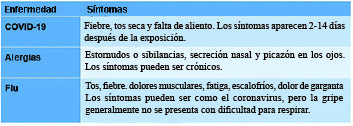
The beginning of spring also marks the beginning of allergy season. Unfortunately, allergy season this year is right in the middle of the coronavirus (COVID-19) outbreak. Avoid anxiety and seek appropriate medical attention by knowing the difference between flu, allergies and COVID-19, here’s how:
Allergies
Allergies involve an overreaction of the body’s immune system, which is responsible for fighting infections. Long-term and proactive care guided by your primary care physician or allergist can help avoid an emergency. Read more here about anaphylaxis, a severe, life-threatening, multisystemic allergic reaction.
It’s important for you or your loved ones to know your allergies. If you and your physician suspect you have allergies, you may be tested to determine what is triggering your symptoms. Be sure to safely store important allergy medicines such as; antihistamines, decongestants, steroids including Injections and drips, topical creams or skin ointments, and epinephrine autoinjector.
Seek emergency care right away if you experience a mix of some of the following symptoms:
- Difficulty breathing
- Wheezing (along with high-pitched breathing sounds)
- Confusion
- Anxiety, fear, apprehension
- Slurred speech
- Swelling of the face, eyes, tongue or extremities
- Trouble swallowing
- Severe sweating
- Faintness, lightheadedness, dizziness
- Heart palpitations (feeling one’s heart beat)
- Nausea and vomiting
- Diarrhea
- Abdominal pain, cramping
- Panting
- Rapid or weak pulse rate
- Pale, cold, moist skin or skin redness
- Blueness of skin, including lips or nail beds (or grayish for darker complexions)
- Loss of consciousness



